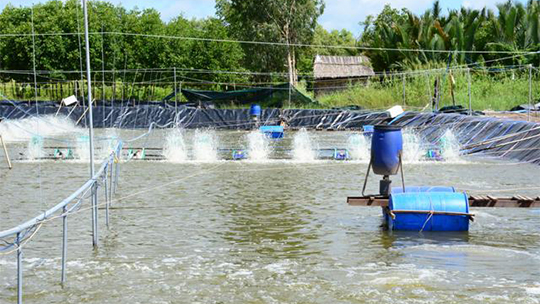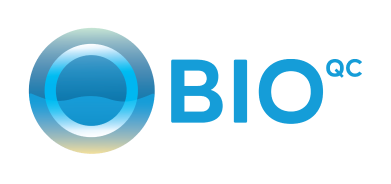
METHODS FOR GOOD QUALITY MANAGEMENT OF SHRIMP POLY WATER
Water quality is an extremely important factor when raising shrimp because it determines the efficiency of feed, growth rate and survival rate of shrimp. In order for shrimp to grow healthy, the water must be clean, free of pollution, with balanced biochemical and physiological parameters. In order to assist shrimp farmers to best manage the water quality of shrimp ponds, let’s see the methods through the reading below!
To ensure consistent water quality, you need to check regularly and make sure that the water in the pond is within the optimal range of the following parameters:
Temperature
Pond water temperature has a direct influence on the growth and development of shrimp. For black tiger shrimp, the optimal temperature is from 28-30 degrees Celsius. The suitable temperature for white-leg shrimp is 25-30 degrees Celsius.
Dissolved Oxygen (DO)
The amount of dissolved oxygen suitable for shrimp ponds is 4mg/l or more. To ensure that there is always enough oxygen for shrimp to breathe, install a full fan system for the pond. In addition, do not over-fertilize or over-feed to limit the growth of algae. Algae growth in the pond will easily cause oxygen deficiency.
Salinity
Salinity directly affects the growth and development of shrimp, and at the same time affects the water quality in the pond.
Clarity
The appropriate clarity in shrimp ponds ranges from 30-45 cm. If the clarity is too high, a pH test should be combined. If the pH is low, farmers need to combine adding lime, fertilizers or using colorants to increase nutrients in the water.
PH
The suitable pH is in the range of 7.5 – 8.5. It is recommended to check the pH fluctuations at 6 am and 2 pm every day.
If the pH is too high (above 9.0), it is possible to use “acetic acid (Western vinegar 1 liter / 1000 cubic meters of pond water) to reduce it.
If the pH is low, CaO can be used quantitatively 7-10kg/1000m3 to improve
Alkalinity
For ponds, the suitable alkalinity level is from 80-120 mg CaCO3/l. It is necessary to check the alkalinity once a week to add lime in time, especially during the molting period.
NH3
NH3 content in water must be less than 0.1 mg/l, the maximum limit is 0.3 mg/l. This is a toxic gas that adversely affects the health of farmed shrimp
H2S
Like NH3, H2S is also a toxic gas harmful to shrimp ponds. The concentration of NH3 in the pond must be less than 0.3 mg/l to ensure a safe living environment for shrimp.
Regularly check water quality parameters
To help ensure optimum parameters are maintained, testing of water quality parameters should be performed on a daily basis.
Controlling phosphorus content and algae dynamics
In shrimp culture water, phosphorus and algae levels need to be regularly controlled and maintained at a stable level. Shrimp feeding is often the reason for an excess of phosphorus in the water.
When feeding shrimp, the excess food or nutrients that the shrimp cannot absorb are excreted, which will increase the phosphorus and nitrogen content in the water. The number of algae increases continuously, which can lead to algal blooms, which is harmful to the health of shrimp. When this is the case, people can increase the water exchange rate to avoid possible bad effects.
Maintain the ion content in the pond at a balanced level
In the quality management of shrimp ponds, maintaining ion content plays a very important role. The ion content in the water directly affects the growth of shrimp, especially during the molting stage, forming new shells.
The ratio of Sodium (Na) to Potassium (K), Magnesium to Calcium (Ca) should be checked regularly and maintained at a balanced level. The recommended ratios are 28:1 (for Na: K) and 3.4:1 (for Mg: Ca).
Change shrimp pond water regularly
Changing shrimp pond water regularly is an effective way to avoid excessive accumulation of ammonia in the water. As a result, shrimps are healthier, not sick or affected by cyclical fluctuations.
However, the method of changing the water for shrimp farming regularly still makes many people worried because it can make shrimp ponds susceptible to pathogens from outside. Therefore, knowledge or thorough testing is required before adding substances to shrimp pond water.
Have a plan to treat shrimp farming water when there is a problem
In the process of shrimp farming, problems are inevitable. People need to carefully prepare measures to overcome the water problem so that they can handle it in time, in order to minimize the risks if encountered.


